Welcome to the sixth step in our free professional learning series on class and student blogging!
- Explain why it’s important to help parents and students connect with your class blog.
- Show common problems parents and students have locating class blogs.
- Suggest 21 ways you can help parents and students find and use your class blog.
Why help parents and students connect?
All teachers know that family involvement in schooling is a key predictor of a child’s success.
With many families juggling full time work and other commitments, we need to come up with new ways to keep up the levels of family involvement. Blogging is a great way to do this.
- Class blogs are an excellent way for parents to find out what is happening in class and what their child is learning.
- Students love seeing their work published online and adore getting comments from people. Comments motivate students to write as it gives them an audience that is real.
- The blog opens up a whole new world of people who can offer encouragement and feedback.
If you want to get the most out of your class blog, you need to help parent and students easily find your blog and engage with it.
For those of you who are teaching young adults, one of your main aims might be discovering ways to get your students actively engaged with your class blog.
Educating parents
Education is key when aiming to get families to join in your blogging community. We can’t assume that parents (or students) bring any blogging knowledge or skills with them when they join your classroom.
While it can be easy to educate students about blogging during your face-to-face time (or learn with them), it’s important to come up with different ways to educate parents. Family members won’t be willing or able to get involved in blogging if they don’t know anything about it.
You want your message to be clear, easily accessible, dynamic, and ongoing.
Like students, parents have different learning preferences and it can be a good idea to offer parents a range of different ways to learn about blogging. We offer lots of ideas further on.
Finding your blog on the internet
If you want families to connect with your blog, it’s important that they know how to find it and return to it. This is an important step that can’t be overlooked.
It’s quite common for educators new to blogging to assume their class blog is easily found using Google or that students will write the blog URL correctly in their notebook. There is too much room for error with these approaches.
Searching for a teacher’s website using Google can be a very frustrating exercise. There can be millions of Google search results and many teachers across the globe with the same name as you.
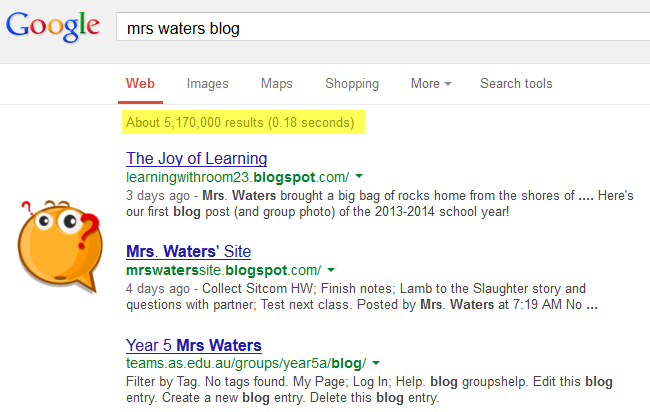
It’s easy for students (or you) to write down the wrong blog URL.
In the examples below the correct URL is mrswaters.edublogs.org. Each example is a common mistake we see in blog URLs sent to Edublogs support.
Mistake 1: First part of the blog URL incorrect
If the first part of your blog URL is typed incorrectly they are redirected to the 404 not found error page.
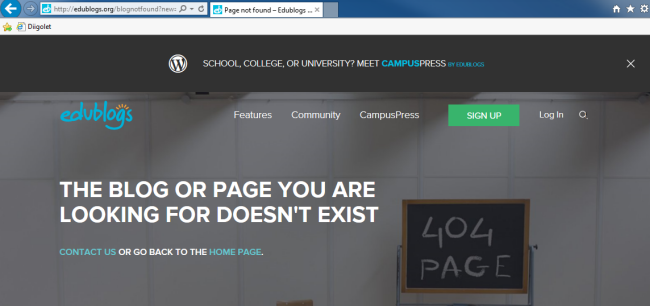
Mistake 2: Edublogs.org spelled wrong
Missed the s in edublogs

Forgot the l in edubogs
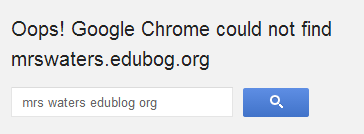
Mistake 2: The URL is written as an email address

What you need to do
Most experienced educators use several different methods to help parents and students:
- Understand what is a blog and how they can participate.
- Easily find the class blog online.
- Feel encouraged to get involved throughout the whole year. Having regular opportunities in place for education and involvement will ensure a steady pattern of engagement throughout the year.
21 Ideas To Help Educate And Involve Families And Students
The most important tip is to make sure copy/paste your blog URL from the address bar of your web browser into any information you share with students and parents!
It’s really easy to type your blog URL incorrectly — copying/pasting your blog URL ensures you get the URL correct every time!

1) Include Your Name In The Blog URL
Your blog in the URL name allows you the flexibility to keep the blog if you change subject areas or year levels in the coming school years.
Simple is always best!
http://mrswaters.edublogs.org/ is easier to remember than http://mrswBPSRoom 124.edublogs.org/
Here are some examples of class blogs that have the teacher’s name in the URL.
- Mrs. Hamman’s Class Blog – http://blogs.goaj.org/mrshamman/
- Mrs. Mooney’s Class Blog – http://mrsmooney.edublogs.org/
- Ms. Saltau’s Class – http://sarahjane.edublogs.org/
- Mr. Cartlidge’s Science Blog – http://mrcartlidge.edublogs.org/
2) Business Card Magnet
Create and distribute “business cards” as the start of the year with your class blog URL and email address (plus any other important information such as school phone number, term dates, school website etc.).
You could create business cards with a free template from a site like Canva or Adobe Spark.
After printing and laminating, you could attach a strip of self adhesive magnetic tape on the back which you’ll find at many discount stores.
3) QR Codes
A QR code is an excellent shortcut to access a website. You simply create one online using a tool like QR Stuff or QR Code Generator.
People simply open the photo app on their phone or tablet and scan the QR code to be directed straight to the website.
You could:
- Add a QR code to your business card above
- Have students create their own QR code and print it for a note to go home about the blog
- Add a QR code to the footer of all your classroom notes like in the example below.
4) Newsletter Links
Include the link to your class blog in the school newsletter or send home your own newsletter (you could even have the class create a dedicated blogging newsletter).
At the start of 2018, parents were told about the class blogs at Beaconsfield Primary School in the school newsletter.
Regular reminders can help! You can mention specific blog posts that families could visit.
5) Add Links To Your School Website
Many schools set up pages on their school website with a directory to class blogs. Take a look at the example from Berwick Lodge Primary School.
If you have your own teacher blog, you might like to add the link to your class blog there as well.
6) Explain Browser Bookmarks
It’s a good idea to teach students or families how to bookmark a favorite website. This might seem simple to you but could be a skill that’s new to others.
Computer Hope offers some really easy to follow instructions for bookmarking in different browsers. You could even email something like this to families or older students.
7) Add A Link To Your Email Signature
This simple idea reminds colleagues and parents to check out your class blog whenever you’re in touch with them.
Below is an example from Linda Yollis.
8) Create Detailed Parent Handouts
There is a lot to know about effectively navigating the class blog so you might consider creating a handout for parents.
You could cover information such as:
- Blog jargon
- Subscribing to email updates
- Leaving and replying to comments
- Using the Google calendar
- Searching the blog
- How to become part of our wider blogging community
Here’s an example from Kathleen Morris.
 Loading...
Loading...
A guide to navigating your class blog is even something students could create themselves. And of course, it doesn’t have to be a paper guide. A digital or email version might work for your families.
Sheri Edwards’ class in Washington State also created a handout for families which you can find on their blog. It’s designed to help parents know what is a blog, the blog URL, and why they blog.
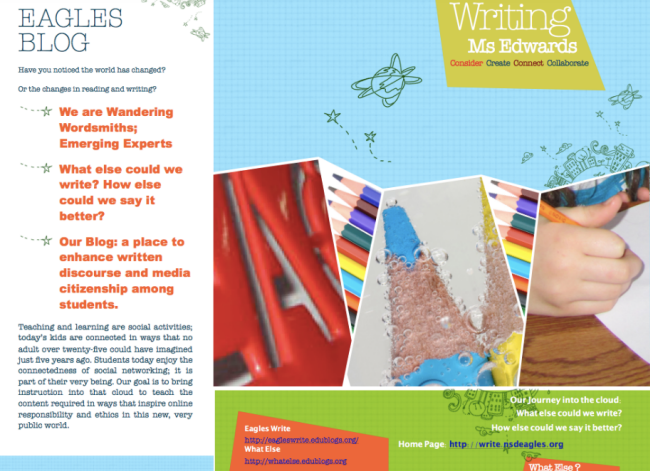
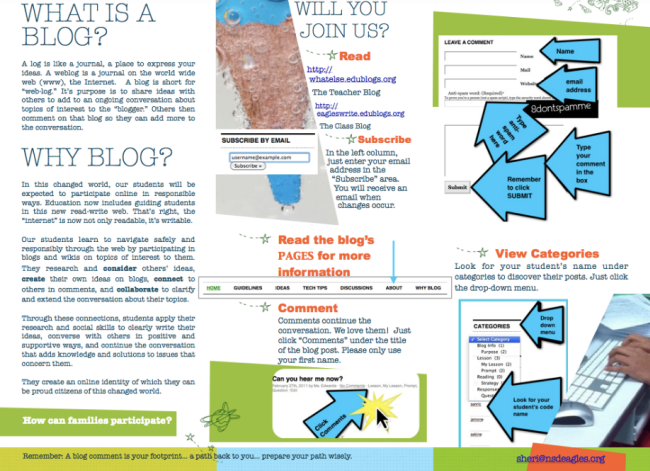
Want to learn more about consent forms and blogging? Check out our guide to obtaining permission to blog with students.
9) Add Information Pages To Your Blog
Pages are the ideal way to publish static information on your blog. You might choose to help educate your families about blogging through information on a page.
A “learn about blogging” set of pages on a class blog can explain to all readers (including parents) what a blog is, the benefits of blogging, and how to comment.
Kelly Jordan, used these pages on her 2017 class blog if you want to get ideas.
For readers who prefer a more visual description, a video tutorial can explain how to comment. This can be posted on a page of the class blog for easy reference.
Below is an example created for Miss Jordan’s class blog.
Tip: This video was created with a Chrome extension tool called Screencastify but there are many screencasting tools available.
10) Hold Parent Information Nights
Many classes hold these events at the beginning of a school year. Why not put blogging on the agenda?
When Kathleen Morris’s old blogging buddy in California, Linda Yollis, held a back to school information night, she skyped in to discuss the benefits of blogging with her families.
Maybe you could get a former student, parent, or colleague to help you with your presentation?
11) Parent Email Newsletter
Sending a regular e-newsletter to parents can be a great way to offer blogging news or tips (along with other classroom news and reminders).
A newsletter can also be a platform to thank the parents who have been commenting, and invite parents to comment on particular posts. Being specific on what you want parents to comment on can increase participation.
12) Posts For Parents
This idea was originally inspired by Henrietta Miller. You can achieve a big increase in parent participation when publishing a post specifically based around a question for parents.
Miss Jordan’s class have an example post on their blog where parents were asked about old technologies.
13) Host A Family Blogging Afternoon
This is a concept Kathleen Morris created where family members were personally invited into the classroom by the students. Students would teach their special guest about blogging through a scavenger hunt type activity.
You can find a post about this event on her class blog.
14) Host A Family Blogging Month
Encouraging parents and families to comment makes it more meaningful for students. It also helps familiarize family and students with how to interact with your class blog.
One way to do this is to have a Family Blogging Month. This is a concept Linda Yollis came up with.
During Family Blogging Month, students try to get as many family members as possible to comment on their class blog. Students record the number of comments by each different type of family member on a class blog chart and the student with the most comments at the end of the month wins a prize (e.g. a donated voucher and/or a guest post on the class blog).
As Linda noted on her blog,
Mrs. Yollis created the idea of Family Blogging Month back on April 1, 2010. The participation, the quality of the commenting, the interaction and learning that transpired via this classroom blog makes Mrs. Yollis beam with pride.
Not only are her students and their family members becoming superior writers, but they are also honing important digital skills like how to communicate and contribute online, how to limit personal information on the Internet, and how to develop a dynamic digital footprint.
Students look through the archive of the blog to find posts that might interest specific family members.

Visit Mrs. Yollis’ class blog to find out more about Family Blogging Month.
15) Students Letters To Parents
Organize for your students to write a letter to their parents to introduce the class blog and explain how the class will use the blog.
Here are student letter examples from Land of Year 4’s Class blog.
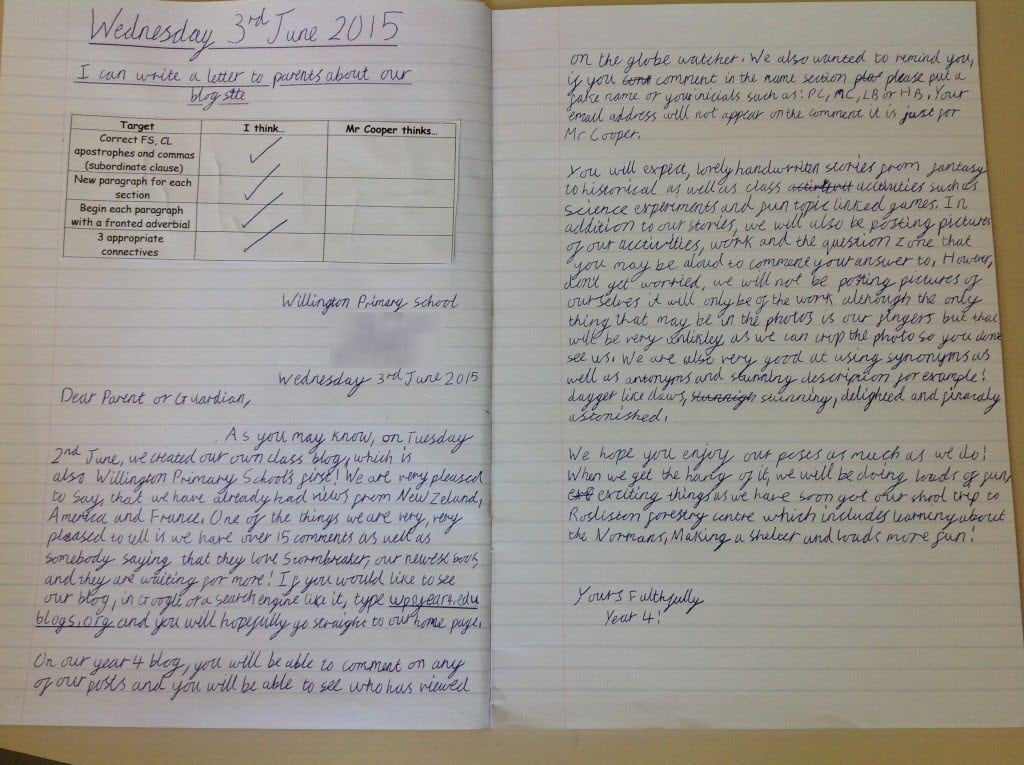
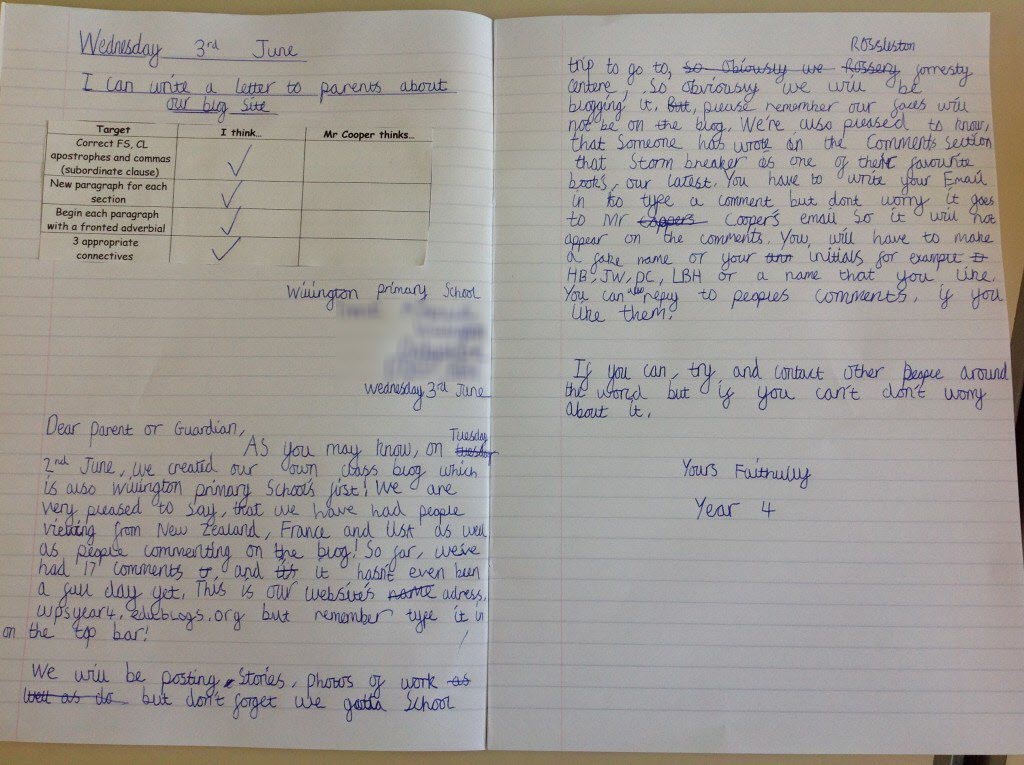
16) Virtual Volunteers
Linda Yollis has shared the idea of having parents act as virtual volunteers on a roster basis. Rather than helping students in the classroom, they can assist online by replying to students and engaging in conversations.
17) Parent Blogging Rep
Some classrooms have a parent representative to assist with various tasks and events. Would a blogging rep work in your class?
The rep could organize your virtual volunteer roster, invite families to read and comment on posts, respond to comments, or, depending on skills, assist with tasks like photography and the creation of multimedia.
18) Blogging Homework
Depending on your homework policies and procedures, you could incorporate blogging into homework tasks that involve family members.
Example task prompts could include:
- Show a family member a blogging buddies’ site and leave a comment together.
- Write an invitation to a friend or family member to comment on a specific post.
19) Parent Guest Posts
Parents bring a wealth of information to your classroom community.
Traditionally, some parents might present to the class on their career or hobby from time to time. Why not adapt this format by having parents write guest posts for your class blog?
Alternatively, you could have students interview parents or community members for posts.
20) Don’t Forget Grandparents And Other Family Members
Your ready-made audience doesn’t only consist of parents, of course. There may be other family members, including grandparents, who would love to become part of your blogging community but just need guidance or encouragement.
Linda Yollis has had great success with some grandparents becoming particularly interested in her class blog. Bubbe, a 92 year old great-grandmother guest posted on her blog and Nonno, an Italian grandfather was once a regular contributor.
The role these community members played in the students’ development was priceless.
21) Set Up An Email Subscription
Add an email subscription widget so parents can subscribe for notification of new posts.
Our tutorial walks you through the simple set up process.
Note: This feature is only available on Pro blogs and CampusPress blogs.
Get Parents Involved Infographic
This infographic might be handy to help you come up with ideas throughout the school year. Perhaps you have a colleague you could share it with too?
Your Task
We’d like you to add your voice and ideas to our ongoing conversation about student blogging by completing the following tasks:
- Read through our 21 ideas above and choose one or more of these ideas to use with your students and parents. Leave a comment to let us know which ones you are going to try with your class or share a link to any resources you’ve developed.
- Read through the most recent comments in reply to this step and leave a response to another person’s comment.
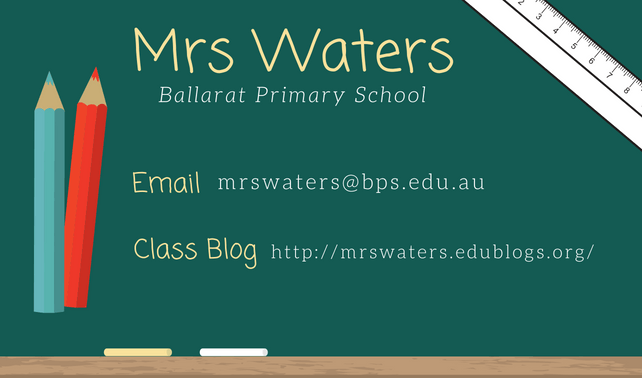
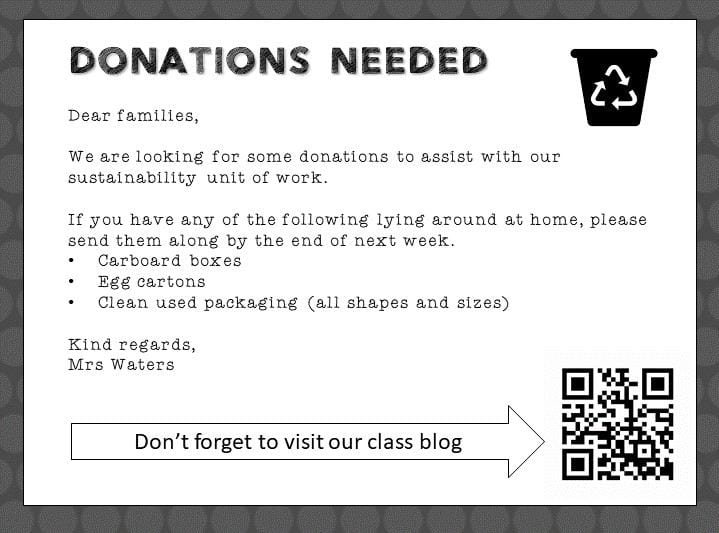
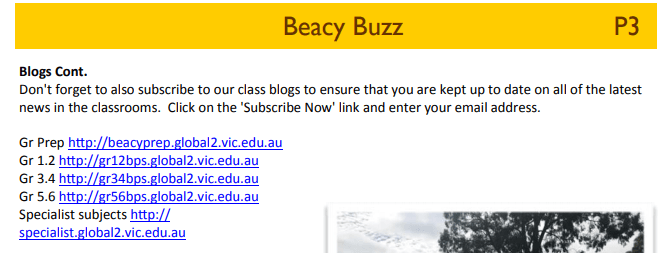
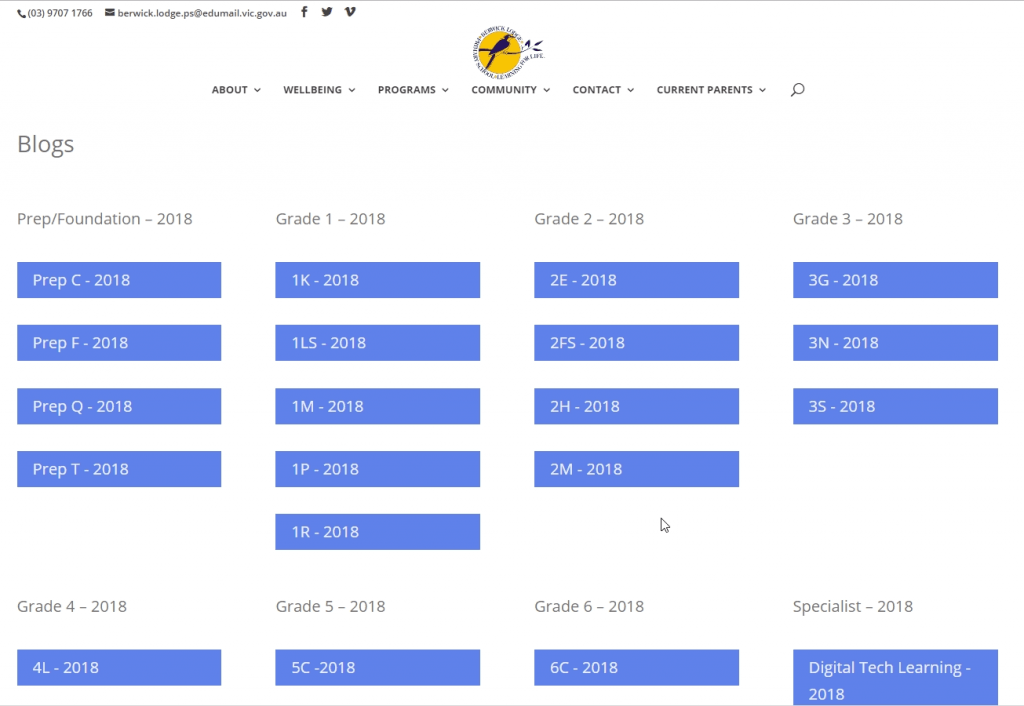
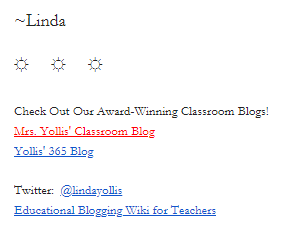

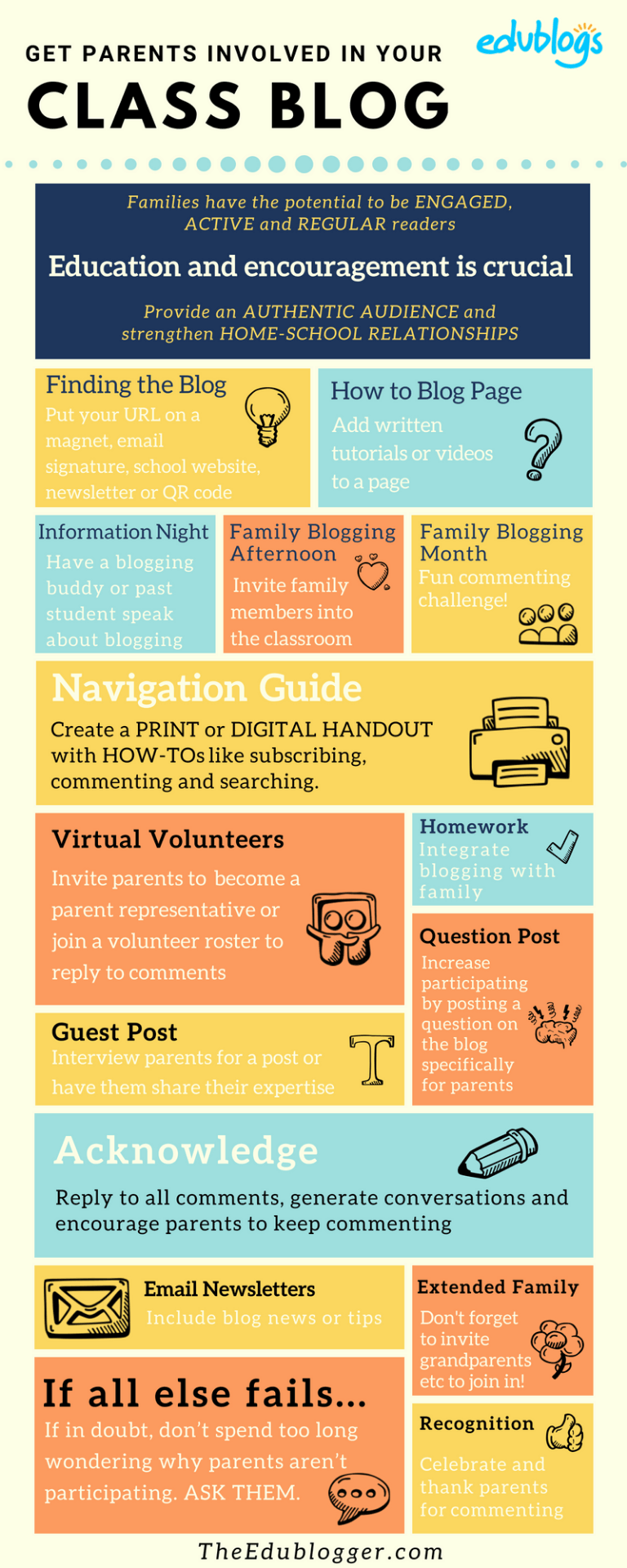
My plan is to send a quick blurb out to all the homeroom teachers in the school with a live link in it so that they can copy/paste it into their next school-to-home electronic newsletter. Our upper elementary classes also have a group website, and I can post it there. The third step will be including it in the school-wide newsletter that goes out weekly to our student, parent and alumni communities. That will be enough to start, I think!
http://mrsstoneswhalewatchers.edublogs.org/
I gave my permission to publish note out to parents with a QR Code for them to have easy access to our class blog. Last year we had QR Codes to special posts that were connected to an art installation at a school concert. Parents downloaded a QR reader and scanned artwork by the children. the codes took them to their blog posts that told them how they did the artwork and how it was linked to our science unit and also included photos of them doing the art with friends.
In order to help students and parents have an easy access to the school blog site I have put into place the following:
1. Parents can access the blog from the library’s school webpage called, Our School Blog/Eagle Press. They can click on the hot link or scan a QR code. My school website is at: http://sja.nj.schoolwebpages.com/education/components/scrapbook/default.php?sectiondetailid=3440&
2.Parents will also be notified by electronic mail. Included on the flyer is a hot link to the blog site or parents can scan the QR code.
3. On my email I added to my signature page, the hot link to the school blog.
On the library’s school website as well as the school blog, parents are encourage to read the Blog Guidelines as well as the Comments Page together. On the Blog Guidelines pages, parents and students must complete a Proper Use and Consent Form for Blogging form. On the Comments Page, students must take an online quiz. Parents are encouraged to complete the quiz with their child. A Sorting activity is also offered to those who would like to take it. It also can found on the Comment page on the blog. I tried to make the tasks a family event. Here is a link to my blog: http://sjaslmc.edublogs.org
Hello again!
My tips for helping parents and students connect with my class blog is:
– At an early stage, merge the online activities with classroom activities;
– Encourage research on forums and examples of national and international blogs on the same level of education
– brainstorming journal with parents and students to understand the impact that writing activities in the log are having
🙂
Sónia Abrantes
Hi Sónia,
Thanks for the comment, and for your tips. It’s always great to see our readers sharign their own ideas.
I learned so much with this task on how to connect parents and students using the class blog. QR Codes are such a fun and easy way to connect with today’s parents and students and my students as used to using them for a variety of activities. I will definitely create then attach a blog QR Code on the class newsletter. I would also like to make a large 8″ x 10″ copy of the QR Code and post it on the wall outside our classroom so visitors can visit our blog. I plan to provide a link to our class blog, which includes my name in the blog URL, in my class brochure. I provide parents and students with a class brochure with pertinent information including my email address and now a link to the class blog. Finally, as I become more comfortable and confident with blogging and the students become active in posting, I hope to develop a parent letter that shares information about our blog and how to post comments.
Lots of great ideas here for getting the information about the blog out! The business card/magnet is a great idea, but I think the best ones are the ones you can just click on. I added a link to mine on our school webpage. I love the idea of adding it to your signature line on email as well! If you post homework assignments online, this would probably be a great place to put the link as well.
Hello, Ms. Joiner!
I agree with you, mainly about de link to click on.
The problem is when parents and students do not have easy access and handling with computer and Internet.
In those cases have always to give the card on paper also.
Sónia Abrantes
My students are all required to subscribe to our course blog via email. I posted directions on our class moodle site (before I discontinued it) and spelled out their requirements. For next year I am going to make a pdf of screenshots with specific directions; several of my students (and yes, these were high school students) still had trouble. I also post the blog address on our required school webpage, and on my google classroom page.
I really like the idea of including the blog link with my email signature. I think I will go add that right now!
Jen K
Hello!
To help parents and students connect I use:
1. Business card magnet with your class blog URL
(view here: https://espacocrescer.edublogs.org/files/2015/02/cartao_contacto-15mjbkx.png)
3. Post link to your class blog on your teacher or school website
(view here: https://espacocrescer2012.wordpress.com/contactos/)
4. Include your name in the blog URL – the name Espaço Crescer is everywhere!
5. Add a link to your class blog in your email signature
(view here: https://espacocrescer.edublogs.org/files/2015/02/assinatura_mail-2iur3ui.png)
I will explore:
2. Include the link to your class blog in the school newsletter or send home your own blogging newsletter
6. Create a QR Codes for your class blog URL
7. Create detailed Parent handouts
9. Host a family blogging month
To help my students connect to the blog I added the url to my email signature plus I made it part of the online class structure in Blackboard.
Hi everyone
I want to shout from the rooftops that I just made a QR code of my own and I can’t believe how easy it was!!!! Wow! Now I am putting it on the letter that I am sending home to parents. I am also using some of the contract ideas that I have seen about which is really helpful and concise so thank you Kristen Tschofen!
I encourage everyone to make a QR cose for their note home!
Thanks for the tips on promoting your blog… as I don’t have a class but would like students across the school to access the blog, I would email the link to students. I can do a bulk email to the students and then have them add the webpage as a link on their intranet page. Perhaps also a link to the blog could be added on to the school website.
Thank you for the great suggestions. The first thing I will do is add my class blog site url to my email signature. That sounds quick and easy, and it will reach the people who would want to know about it; parents, students, and staff members.
To share your class blog with families, I would suggest several of the things you already suggested. I don’t have a class currently, but when I did, I:
– added the URL to the course syllabus.
– had students recite the URL out loud, usually in chorus.
– had students recite the URL to me before we’d go there during teacher-student conferences.
– put the URL in my signature file for my email account.
Things have changed in my district in the few years since I’ve been helping others teachers. Now, I’d also:
– put the link on the school website (where other teachers have put theirs).
– make a QR code to the assignment or class blog on each print-out.
– record and launch a phone recording/blast with the address at least once per grading period.
Hi Mrs. Navratil
Thanks for sharing how you helped parents and students find your class blog and for sharing other ideas you would now use!
Sue Waters
Support Manager
Edublogs | CampusPress
A piece is being added to the weekly e-news about all Year 7 English students blogging with the 5 class blog URLs included.
Wouldn’t use the URL as part of an email signature as secondary teachers teach across all year levels while the class blog is only for Year 7s.
Would create a QR code and display in our Learning Commons.
Will set up an email subscription for notifications of new posts. Might have the students do this as well.
I have added my blog link to my website. http://www.tangischools.org/domain/322
I would also include a QR code that would direct parents to my Blog on a parent newsletter. This is also something I would include in my email signature.
I think a QR code on a class website, Blackboard site, or weekly homework sheet is the easiest way to give parents and students easy access to your blog. As students work on homework they could scan the QR code and post a comment about a topic. With the first parent newsletter I would include some basic tips and tricks for navigating the class blog and class expectations for the blog.
Hello,
I have added a link to my signature on my e-mail, put it on our blog letter to parents, and the Bremen City Schools main web page added a link to it’s quick links. I also do a lot of just talking it up!
Donna McBrayer
bmscareercenter.edublogs.org
Right now it was a gift for our district to even let the www see our blog and not limit it to district accounts only. Only students can comment, but parents are allowed to view the student work. I am teaching them about writing for a world wide audience. I am letting this be our experiment and hoping to branch out to let everyone be able to have a commenting conversation. I understand this will require more monitoring, but I can do that if it opens a dialog of talking about reading, which is the point of the blog.
http://blogs.neisd.net/jodiharris
Hi Jodi
Not sure if this helps but if a blog is set to moderate all comments, and students are assigned the role of contributor on the blog (if it is a group blog), only the teacher is able to see the unapproved comments.
Sue Waters
Support Manager
Edublogs | CampusPress
Hi all,
I included my name in the blog URL (William’s ESL Home). I teach adult learners, so adding a link to my class blog in my email signature would be helpful to my students.
If I taught children, I would create a QR Code for my class blog URL. It’s a fast and easy way to open websites and can help parents and students connect with the class blog. Newsletters with the class blog would also be useful but may not open if typed wrong.
Thanks for reading,
William
Hi William
Including your URL in your email signature is a really good option. Make sure you click on the link in the email to confirm the URL has been added correctly.
It is also worth adding the subscribe by email widget to your sidebar. Some students may prefer to be notified of your new posts by email and this helps them remember your blog URL since they just need to click on the link in the email.
Sue Waters
Support Manager
Edublogs | CampusPress
My students have recently been using QR Codes to uncover chosen web sites for the Chinese New Year. They love scanning them and finding information from them. Since I see every child in the school and don’t have much contact with the parents (other than dealing with lost book issues, etc) I’d use a QR code in the school newsletter linking it to my library blog. I would also put the QR code in our school newsletter at the beginning of the school year. Lots of library information and updates could be posted.
I will provide a link on my teacher website to the blog space.
nancyvculture.edublogs.org
Hi Nancy
I noticed that you’ve been adding an @ symbol in your blog URL. @ is only used for emails. I’ve edited your comment to remove the @ but I recommend you check the link you’ve added to your teacher website to make sure it doesn’t have an @. Quite a few get caught out by those pesky @’s!
Sue Waters
Support Manager
Edublogs | CampusPress
Thanks, Sue. Will check!
All of the ideas listed for getting parents and students connected to a blog are great. I have linked my blog on my teacher webpage and will definitely create a QR Code that will take them directly to the site. The QR Code could be on a business card which the students take home to parents. Including the information in the class newsletter is a must and it reminds parents that the blog is still active each month when the newsletter goes out. I think it’s important to establish an email relationship with parents and that would be another great way to let them know about the blog. This challenge has provided me with many great ideas for getting parents involved in the blog. I will definitely pass these ideas on to my classroom teachers.
Here is my Teacher WebPage which has my blog linked at the bottom of the menu on the left.http://www.tangischools.org/domain/325
Hi dspears
I think QR codes are a great way to share a link to blog URLs. Another important way is to set up email subscription so the parents are notified by email when a new post is published. You can do this by adding the Subscribe by email widget to your sidebar.
Family blogging month also works well with younger students.
Sue Waters
Support Manager
Edublogs | CampusPress
I’ve added my blog to our school website and am using a QR code to enable easy access. I’ve added my blog address to my email signature and published the blog in my circus newsletter. I’ve also added the subscription widget. We held a blog launch to launch them to our parents, but we probably didn’t get a great response – busy time of the year. I think we need to redo that in a different manner. I’m thinking of suggesting our specialist team have a magnet made that includes all three blog addresses. 🙂 Thanks for the tips!
Hi there!
Thank you for the tips on making connections with our parents. Our blog is currently linked to the homepage of our school website. This has made it easier for our students to access the blog. However, I still need to try and promote more parent connectivity. Through this challenge I have added the ‘subscribe via email’ widget. I have also set it so that the email notifications will be sent out each Thursday to align with our newsletter day. I really like Kathleen Morris’ note ‘2Km and 2KJ Blog information note’. I might need to send a note home like this at the beginning of next term.
Annie
Hi Annie
I’ve just checked your email settings in http://year4ceps.global2.vic.edu.au and it is currently set to “Immediately when a post is published” If you want it to send it weekly you need to change it in Subscriptions > Settings.
You can also manually add email subscribers using Subscribers > Add Subscribers. If you use this option we recommend you select “Skip email confirmation”.
Sue Waters
Support Manager
Edublogs | CampusPress
Hi Sue –
I do not seem to have the email subscription. Do I have to have a pro account for this?
The things that I have done to promote blog activity are:
– Including the link on my syllabi
– Demonstrating blog usage at Parent Teacher Night
– Created a link to my blog via my school’s website
– Included my name in my url
– Added a link in my email signature
– Set up an email subscription
The things that I still want to try to promote blog activity are:
– Writing a “How to Blog” article for the school newsletter
– Create a QR code
I think the most important thing for connecting with parents and students via the class blog is to make sure it serves a purpose that you believe in, merely having a blog just to say you have one isn’t enough. It has to be up to date, it has to contain important information, it has to be easy to find and navigate, it has to serve a function and as an art teacher I feel it has to be visually interesting.
Amy Capalbo
Hi Amy
Great point re “most important thing for connecting with parents and students via the class blog is to make sure it serves a purpose that you believe in, merely having a blog just to say you have one isn’t enough. It has to be up to date, it has to contain important information, it has to be easy to find and navigate, it has to serve a function”
That aspect isn’t something I had thought of including in my information for this section but it is a very important point. Parents and students need to see value in how you are using the blog; without that you will struggle to make the connections with them.
Sue Waters
Support Manager
Edublogs | CampusPress
Finding out how to use all QR codes in all these useful ways has changed the scope of what I can do. My intention will be to host a parent session run by the students demonstrating and sharing tips and advice about the blog. This is where I can give the parents an information pack with QR codes and other relevant information.
In the classroom I like the idea of the QR codes saving time by eliminating the problems with students typing url’s incorrectly, especially for younger students. We will promote our blog on our school Facebook page and launch a family blogging month. Having an initial promotion and targeted project for everyone to be a part of should contribute to a sense of momentum and engagement for the students.
Tina
Hi Tina,
I agree, early involvement with families and initial promotion are a great way to get students engaged and excited!
Dan Leeman, Edublogs Support
I have a class website through Haiku Learning that the entire school uses to stay connected. When I introduced my blog, I put a link to the blog on my front page, which is where parents and students go each week to find information on homework and what we are working on in class. I also have an “English Blog” page on my site that can be found on the left side of my homepage. I instructed parents and students to bookmark my page in their browsers, but they can always find the link by going to my “English Blog” page on my Haiku page. It makes it pretty simple. I love the QR code idea, though! I am going to create a mini poster of my blog page with the QR code and post it in my classroom. Great idea!
Hi Amy
QR codes are very popular with educators currently. We’re seeing so many amazing ways they are being used. Paul Heubl just published a post on how he uses QR codes with Mystery Commenting on student blogs – http://paulhuebl.com/2014/09/05/commenting-is-sharing-the-teaching/
Thanks!
Sue Waters
Support Manager
Edublogs | CampusPress
QR Code is a great idea – I love them, but never think to make my own and use them!
I have the address of my blog on the top of the syllabus that is sent home to parents, but on the day we first start using the blog, I will hand out QR code to students as well – and hopefully some of them will make it home to parents!
These tips are great. My school has already done a few of them, ie the permission form, a sticker in students communication books and emails to parents to encourage them to subscribe to the blog so that they get email notifications and a direct link to the blog. I also try to post questions on the blog to encourage students and parents to log on at home and answer. For example, which countries were involved in the Commonwealth Games? Now that most parents have subscribed, I find that there is a lot more involvement from parents.
H Katie
Great to hear you have strong support from your school to help with promoting it to parents and that using email subscription has helped encourage parent involvement.
Sue Waters
Support Manager
Edublogs | CampusPress
This was very helpful as my next step on the blog is getting my students set up to begin posting. For the first few weeks of school, I have just been running the class blog as a class website with information for parents and extra resources for students. In the next weeks I will be working through talking with my parents and training students to begin their own blogs. I thought the family blogging month was a neat idea – and could be a great positive way to kick off the student blogging!
I thought the parental consent form was excellent and will be adapting it for use with my parents. I will also be adding our class blog to my email signature.
One thing that I did was to post a QR code to our class blog on the window of our door to our classroom – parents could scan it on open house night (I don’t think anybody did…) or a parent or administrator could pull up our website on their phone as they walk by to get a glimpse of the workings of our classroom.
Great suggestions on how to promote our blogs in the ’10 Simple Ideas to help”. I plan to include a link to my blog in my email signature and will also post a link to it from our school class page on our school website. If time permits, I will also create a brochure/handout for parents at our upcoming parent night. I have already sent home an intro letter that informed parents we were going to be blogging in class. ( a CYA, of sorts), but also plan to followup with an email message with more details when I get closer to implementing in the classroom.
I am curious how others have addressed the issue of limiting our posts with a blog password vs. the motivational ideal of the authentic/global audience. In my intro of the concept to the class, I received the comment/attitude ” nobody’s gonna read it anyway”. Any thoughts/suggestions for this “non-believer”?
Mrs. C
G’day Kae,
Back in 2008 I began blogging with my class. We had the class blog open to the world, but who was leaving comments … only the students and myself. I had to find a way to get that global connection for the students.
Thus began the student blogging challenge which I now run twice each year for a ten week period each time. This is a chance for students and classes to connect, read posts and leave quality comments with students all over the world. So far over 400 classes from 20 countries have registered their class blog. I am expecting more students to start registering their own personal blogs in the next few weeks now school is back.
If you are interested in joining, click on the link in my signature area. The most recent post has links to the class registration as well as student registration (only students who have their own blog)
Sue Wyatt
Mentor: Teacher challenge
Founder: Student blogging challenge http://studentchallenge.edublogs.org
Sorry, my comment was not finished.
Once the blog is ready for the children and parents I intend to do a few things:
– share the link with the children via email
– add the link to the children’s pages on google drive and the children’s website
I’m still not finished.
I also intend to put an item with some education in the school newsletter and create a QR code with a link to the blog. Wish me luck.
My blog is not ready to be introduced to the chlldren yet as there is no real content (we only have 3 weeks of the term left) but I am going to send an email to all the staff with a link to the blog address and ask them to comment on it – set up and colour scheme, etc.
Once the blog is ready for students and parents I intend to do a number of things
Hi Cheryl ( library1884 )
Sounds like you have it all really well organised and are giving yourself time to make sure it is set up as you want.
Sue Waters
Support Manager
Edublogs | CampusPress
When we first started, we emailed all our parents with a link to the blog. This way they could see what a blog was, and to get permission for their daughter to be part of the blog. At the start of the year we included information about blogging in our Curriculum Information Evening, and all parents subscribed. They love the connection to their daughter’s education and see the blog as a way to start conversations with their daughter. When asked, “What did you do at school today?” instead of responding with “I don’t know!” or “Nothing”, the families can ask specific questions and have a richer discussion.
Hi Jenny
Thanks for sharing how you helped parents connect with your class blog and how it has benefited both families and your students.
Sue Waters
Support Manager
Edublogs | CampusPress
This is great fun and I can’t wait to teach to my students. I have added some widgets to our blog and created a QR code which I will be sending home with students. I could not find the ‘subscribers’ widget to set this up.
Mrs Monaco
Hi Mrs Monaco
The widgets look really good. Let us know how the students go with the QR code.
The email subscription widget is an Edublogs Pro widget. You only see it in your widget area if you are using an Edublogs Pro blog.
Sue Waters
Support Manager
Edublogs | CampusPress
This is one of the important elements of blogging that we often over look. I like all the links and love to follow the rules that will consolidate my online blogging for my class. Thank you very much, Edublogs team.
All these tips and ideas are just awesome, thanks ever so much!
As I have no parents to connect with because I teach at University and I train teachers online at the Spanish Ministry of Education, what I have done is develop a page for my trainees to connect with other peers through a range of collaborative projects they can be part of, and so there we have the “Proud to be part of …” page, http://stopandlearnenglish.blogspot.com.es/p/we-are-part-of.html In that way, I hope they can become e-connected learners too.
Hope you find it is OK
Best regards
I am definitely going to put the classroom blog’s link in the signature of my teacher email address. Then every time I email parents the link will be right there for them to click on!
Since I’m using my blog more as a professional resource than a classroom resource, I’m not sure I need to promote it to parents. However, I’m not adverse to doing so either. It’s not hidden information – I tweet posts etc, but the information is more reflective, more critical of my practice and pedagogy.
What are other people’s thoughts? Do you share your professional reflections with parents?
Hi Petra
Most teachers I support keep the two blogs separate. They have the class blog which they share with the families and students. While their personal educator blog they are more likely to share with other educators. You’ll find our tips on sharing personal educator blogs here – http://teacherchallenge.edublogs.org/step-4-connect-with-others/
Sue Waters
Support Manager
Edublogs | CampusPress
I have a subscribe by email box on my home page. However, I also send home a letter at the beginning of the year to parents, show them personally during our beginning of year conferences, as well as send home a handout on blogging tips. The handout was from edu blogs. I really like the idea of parent blogging month! I might give that a try for students to blog at home about their reading books.
Since I teach in High School I would like my students to submit assignments to different folders like you can with Google Drive. Is it possible with WordPress/Edublogs? If not I also would like to know how its done with Google Drive.
Thanks.
Hi Musekiwa
It isn’t possible with WordPress or Edublogs (which is powered by WordPress).
Teachers normally do this using Google Drive ( http://www.freetech4teachers.com/2013/04/use-shared-google-drive-folders-to.html ) or Evernote ( https://docs.google.com/document/d/1viaA5ZIvgEUtMhHvT-Oexrla8dfJRKBIkP_2J63kTZc/edit ).
Sue Waters
Support Manager
Edublogs | CampusPress
I am going to add my blog addresses to my email signature for starters but our specialist team of teachers are planning to release them for open to school inspection at the end of this term which will be done with a specialist newsletter home. I also have my blog address listed in the hard copy visual book of art room stuff that is kept in the front foyer of the school.
A suggestion might be to add your address to Facebook pages as that will easily access a lot of current contacts and most schools seem to be on it now. Twitter could also be another option or link it to your pages through Pinterest and other social media 🙂
Hi Leah
Love the idea of adding the blog URL into the hard copy visual book of art room. I hadn’t thought of that. Wonder if also worth adding it as a QR code as that might grab attention?
Pinterest would be a really lovely way to share student art work as it works well for visual areas.
Sue Waters
Support Manager
Edublogs | CampusPress
I have already included a link to my blog for students and parents on my class website. Additionally, in the classroom I have included a QR code for easy access to the blog and placed the code on my course syllabus that went home for parents. Lastly, the blog name is my name which I think helps students remember the URL in order to navigate to blog site.
Hi Kara
Great idea of adding the QR code to the course syllabus!
Including your name in the blog URL definitely helps provided they don’t get the rest of the URL wrong or include @ in the URL. You would be amazed at the number of URLs we’re sent daily by educators that include @ or the wrong URL. Having the URL included in some many sources like you’ve done helps addresses these types of problems.
Sue Waters
Support Manager
Edublogs | CampusPress
I am completely invested in having my parents involved in my blog. Last year’s blog served as valuable one-way communication – parents enjoyed it and appreciated getting what turned out to be the equivalent of a weekly newsletter.
This year, I am handling my blog differently. I want my students to eventually write the posts. Right now (we have only had 2 days of school so far), we are writing the posts together as a class. I have sent emails home to parents informing them of the two posts we have created and have encouraged them to comment. For homework tonight, I asked my students to share the posts with their parents and to comment. Since they are so young, I know parents will be doing much of the typing and the posts/comments will be enjoyed together.
I have my address in the signature section of my email and on the weekly homework sheet the students have received.
Right now I am accepting almost any student comment, provided the grammar/spelling/mechanics are okay (which they are because the parents are helping). My next step is going to be paper blogging with my students to teach them about how to comment. Once they learn about commenting, I am going to teach them how to write the posts. If two students post a week, the rest can comment on those posts.
In our two days of school, my students have been quite excited by the blog and have begun commenting among themselves. Please let me know if you have any other general advice for me. This is new territory!
Hi Amanda
Great approach and it looks like you have it all organised well!
Teachers like Kathleen Morris and Linda Yollis get the parents to help their younger students with leaving a comment on posts. It helps parents connect with class blog while supporting the students with their literacy skills.
Some teachers rotate their students through publishing posts on the class blog once they feel the students are going well with their commenting while others get their students to publish post on their own student blogs. Ms Cassidy’s blog ( http://mscassidysclass.edublogs.org/ )is an example of younger students with their own student blogs where as Mrs Yollis blog http://yollisclassblog.blogspot.com.au/ the students publish posts on the class blog.
Great to hear how excited your students are!
Only tip I can think of is make sure all comments are moderated and only published when you approve them. I’m not sure what the default comment setting for Weebly is so I would check to make sure it is set to moderate all comments.
Sue Waters
Support Manager
Edublogs | CampusPress
The proper use and consent form is a great idea! I will make sure my students have these on day one (this Friday!). I better get started on it.
Having attempted a blog before that very few people read regularly (I think I had one comment), I am taking this step seriously. I’ve posted my blog information in a few spots:
-on the school website
-in my signature on all my emails
-in my classroom
I am sure that this blog will be accessed frequently since it will be the primary resource for my journalism class. All work will be managed through the blog.
On Meet the Teacher night (Sept 24), I will give parents a handout. I also plan to give these handouts to my fellow teachers to inspire them to create blogs as well.
Hi Mrs MacInnis
Many schools and school districts now have consent forms to cover all classes however it is more common in 1-to-1 schools. Worth checking to see if your school does have a standard consent form.
I’m not sure how you feel about a class twitter account but it is another way we see Journalism and English teachers help connect their high school students with their blogs.
Sue Waters
Support Manager
Edublogs | CampusPress
I love all the ideas:) In the past I have sent the link to parents via email and it was usually successful. This time I am going to send a blogging explanation newsletter, post a link on my class website, my name is in my blog URL, and I am going to try put a email subscription widget on my blog…not sure if Kidblog has that facility but I am going to look into it 🙂 I am also going to send the link to my Skype collaborators to get them to visit our blog so we can collect many flags from around the world and connect with other countries and students!
Hi Bernice
I’m not sure if Kidblog has an email subscription option. The student blogs are part of the class blog on KidBlog which would make email subscription harder to set up (coding wise).
Twitter is another great way to get flags from around the World. Most educators are happy to visit a blog if you send out a link and explain why you would like a visit.
Sue Waters
Support Manager
Edublogs | CampusPress
In the early days of our class blog, we emailed all our parents with a link to the blog – mainly so that they could see what a blog was, and to support getting permission for their daughter’s work/images/voice etc to be on it. This year we included it in our start of the year Curriculum Information Evening, and after a few follow up emails with basic blogging info most parents subscribed. I then found the option to invite subscribers and used that to get the last four families on board. Love the QR code idea, and adding the blog address to email signature. Will get onto that.
Hi Fiona
The email subscription option makes it so much easier; and being able to upload a CSV file helped. Just make sure you select the skip email confirmation if you add their email address.
The use of QR codes in schools is increasing and there are so many different ways you can use QR codes with students.
Sue Waters
Support Manager
Edublogs | CampusPress
I have had some of those issues before! grrr…. One of the things I did last year (because writing a URL is tough sometimes) is create QR codes so that students can simply scan it and access the site. It made it easy especially for my beginner readers. I will be doing that again this year. Our blog will also be listed on the school blog and our Twitter page as well as being shown to parents more in depth at our open house. I think I might create those business cards with a QR on them for open house.
Hi Melanie
QR codes are a good idea for younger students. One of the teachers I network with used QR codes for an activity for her back to school night. She had five different QR codes spread around the classroom with fun facts about her. Students enjoyed the fun of the scavenger hunt finding the QR codes and learning more about their new teacher.
Sue Waters
Support Manager
Edublogs | CampusPress
This step gave many helpful ideas. I know I will link my blog to my class website. I think I will also create handouts for curriculum night in Sept. and maybe even add the link to my school email.
Hi Linda, I like the idea of a handout! Would you mind sharing your handout once it is created? Would love to check it out.
Having read through the 10 Simple Ideas to Help, I have decided to create a business card with all of my contact information and insert a link to the blog on my e-mail signature.
Hi Madame Christian, I like the idea of the business cards especially if they have handy way to clip onto the fridge.
Welcome!